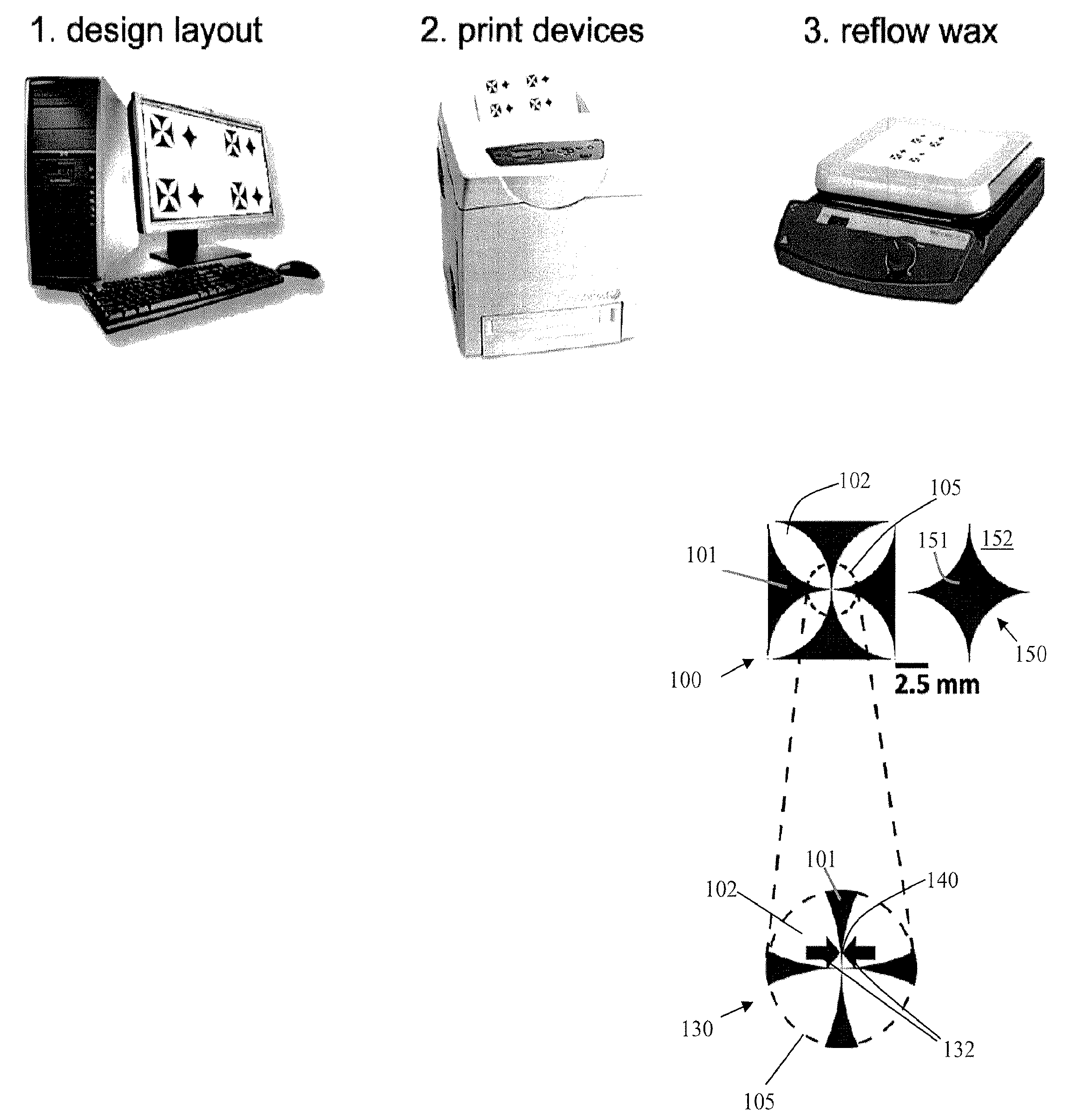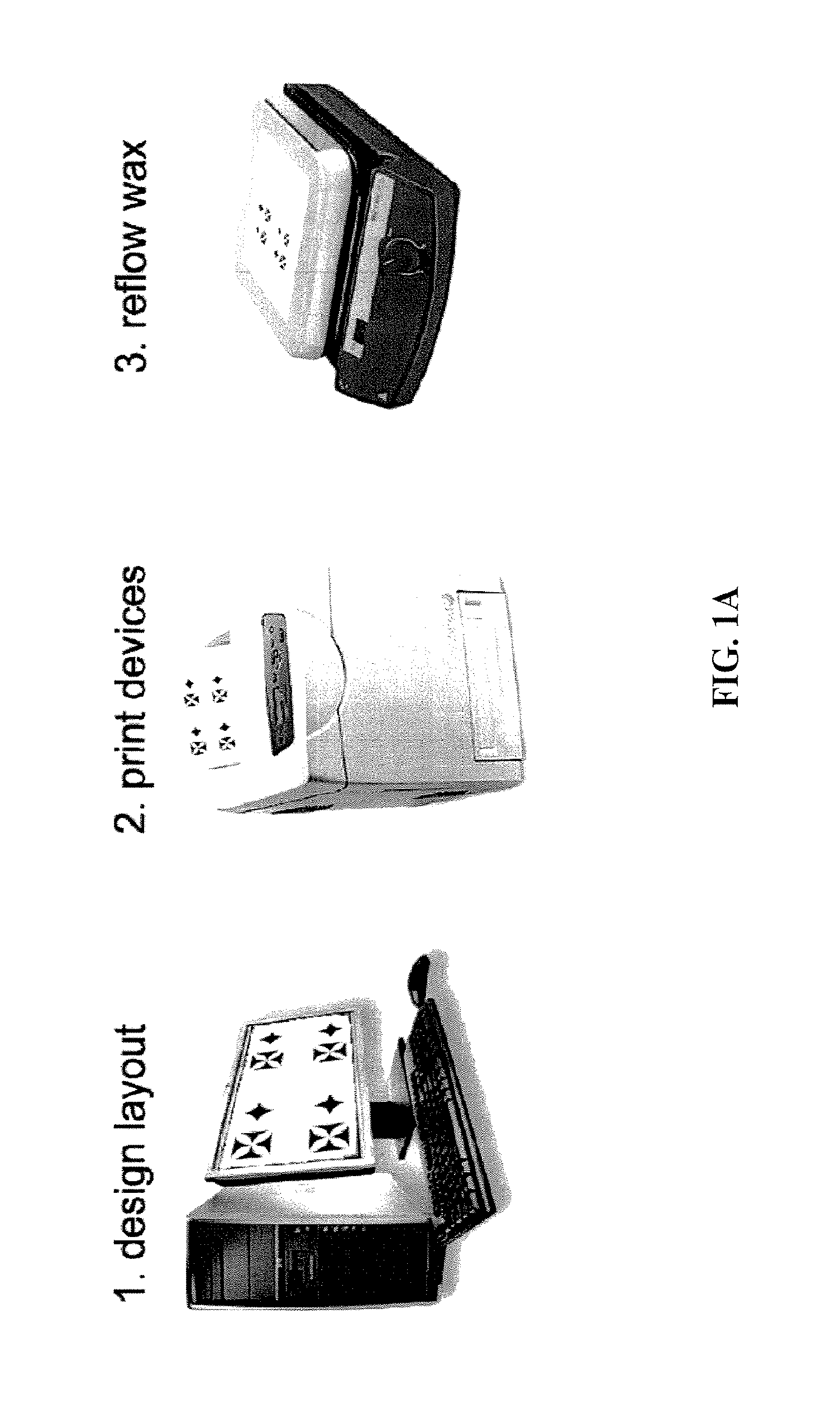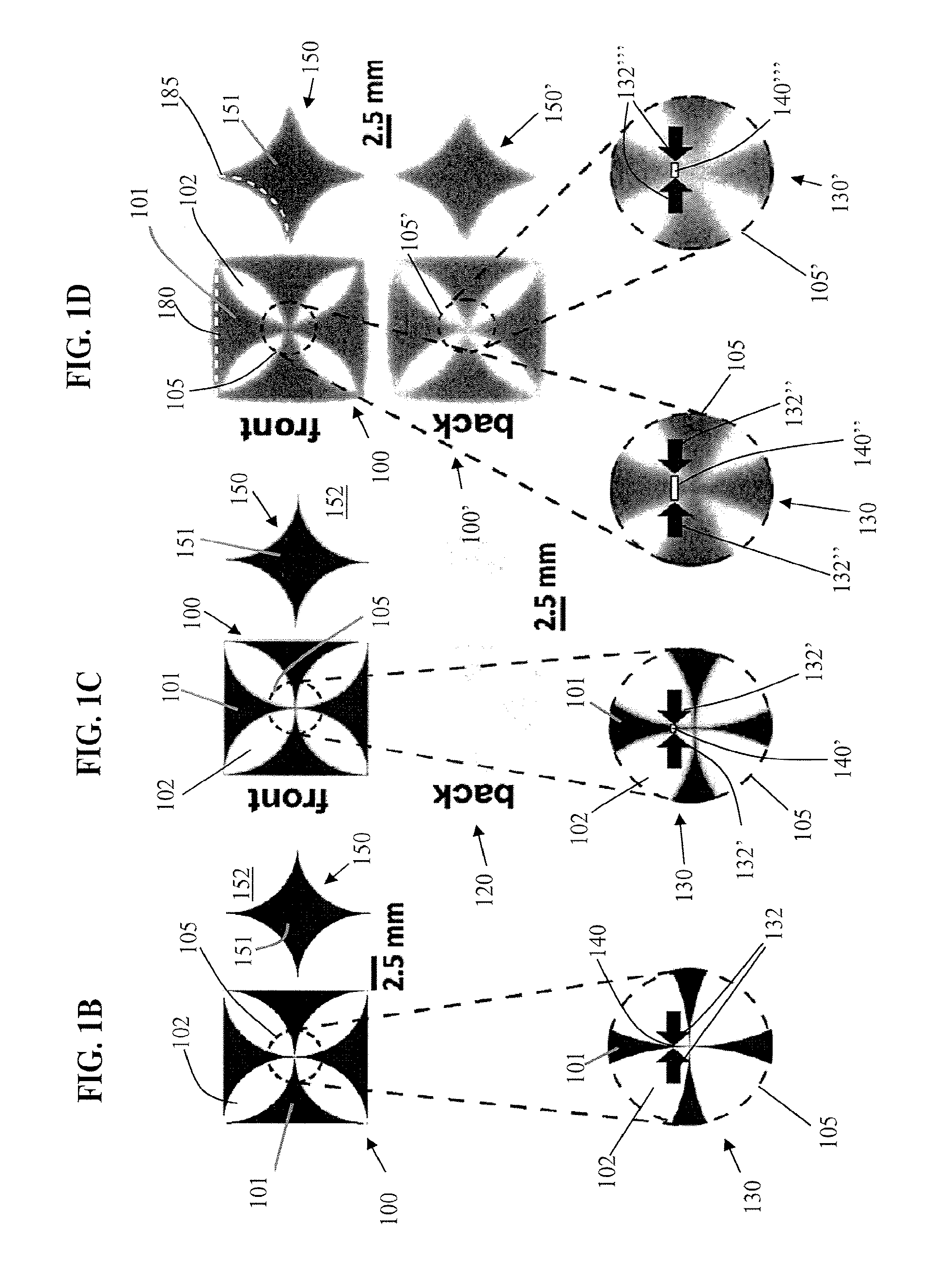Methods of micropatterning paper-based microfluidics
a microfluidics and paper-based technology, applied in the field of paper-based microfluidics, can solve the problems of difficult implementation of measurement in remote regions, typically unsuitable for remote locations,
- Summary
- Abstract
- Description
- Claims
- Application Information
AI Technical Summary
Benefits of technology
Problems solved by technology
Method used
Image
Examples
example 1
Wax Printing Method
Choice of Paper
[0056]Whatman no. 1 chromatography paper was used in most of the examples because it is hydrophilic, homogeneous, pure, reproducible, biocompatible, and available. It is also relatively inexpensive, costing approximately $7 / m2. Starting from sheets of Whatman No. 1 Chr chromatography (460 mm×570 mm), each sheet was cut into four US Letter size sheets (215 mm×280 mm). This paper size fit directly into the manual feed tray from the printer. Regular print paper and TechniCloth were also used in some instances.
Choice of Printer and Heat Source
[0057]A Xerox Phaser 8560N color printer was used, which prints using a wax-based ink. The print head dispenses ink (melted wax) as liquid droplets of approximately 50-60 μm in diameter on the surface of the paper, where they cool and solidify instantaneously without further spreading. The ink is made of a mixture of hydrophobic carbamates, hydrocarbons, and dyes that melts around 120° C. and is then suitable for p...
example 2
Resolution of Wax Printing Method
[0067]To define the resolution of the wax printing method, the barrier width of the narrowest functional hydrophobic barrier and the channel width of the narrowest functional hydrophilic channel were determined experimentally. A functional hydrophobic barrier was defined as one that prevented water from wicking across it for at least 30 min. A functional hydrophilic channel was defined as one that was at least 5 mm long and wicked aqueous solutions from a fluid reservoir to a test zone.
[0068]Many design of the devices in different shapes, orientations, line thickness, and line spacing were tested to allow easy and simple visualization if the features, i.e., lines, gaps, and circles, could function as barriers, channels, and reservoirs, respectively. Analysis of the effectiveness of the hydrophobic barriers and hydrophilic channels were visual, using a solution of 5 mM of Amaranth [CAS number 915-67-3]. The presence of leaks indicated that the barrier...
example 3
Wax Printing and Solvent Compatibility
[0075]Wax-printed μPADs are compatible with aqueous solutions. Aqueous solutions of various pHs, acids (sulfuric acid, 30%, and hydrochloric acid, 1 N), bases (sodium hydroxide, 0.1 N), and glycerol (pure or in solution) wick along the hydrophilic channels but do not cross the hydrophobic barriers, even with a large excess of fluid. Strong acid and base solutions dissolve the paper if the device is left in the solution for long periods of time (days).
[0076]Wax-printed channels were not compatible with organic solvents. Xylenes, acetone, methylene chloride, mineral oil, and alcohols (methanol, ethanol, and n-propanol) all wicked through the hydrophobic barriers. Dichloromethane and acetone washed away most of the dye in the wax and carried it along with the front of the solvent, but after the solvent evaporated, the hydrophobic barriers were still present. Based on this permeability to organic solvents, in one embodiment, biological samples are a...
PUM
| Property | Measurement | Unit |
|---|---|---|
| temperature | aaaaa | aaaaa |
| width | aaaaa | aaaaa |
| thickness | aaaaa | aaaaa |
Abstract
Description
Claims
Application Information
 Login to View More
Login to View More - R&D
- Intellectual Property
- Life Sciences
- Materials
- Tech Scout
- Unparalleled Data Quality
- Higher Quality Content
- 60% Fewer Hallucinations
Browse by: Latest US Patents, China's latest patents, Technical Efficacy Thesaurus, Application Domain, Technology Topic, Popular Technical Reports.
© 2025 PatSnap. All rights reserved.Legal|Privacy policy|Modern Slavery Act Transparency Statement|Sitemap|About US| Contact US: help@patsnap.com



